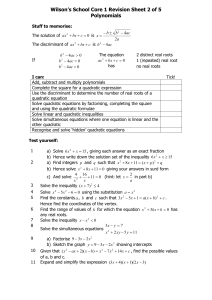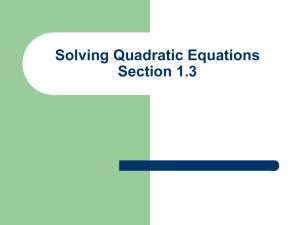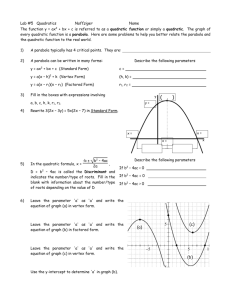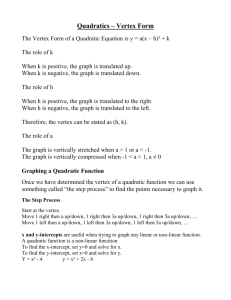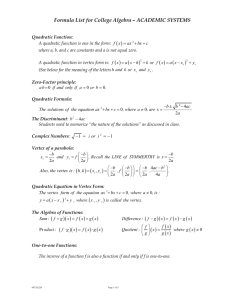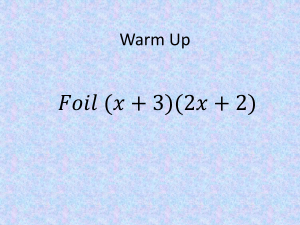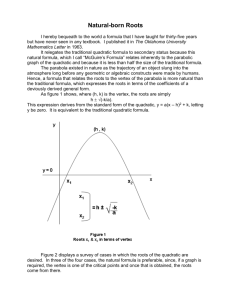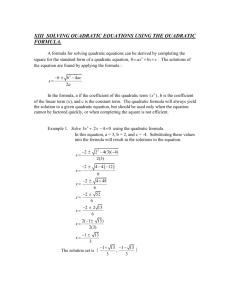Quadratic Functions
advertisement
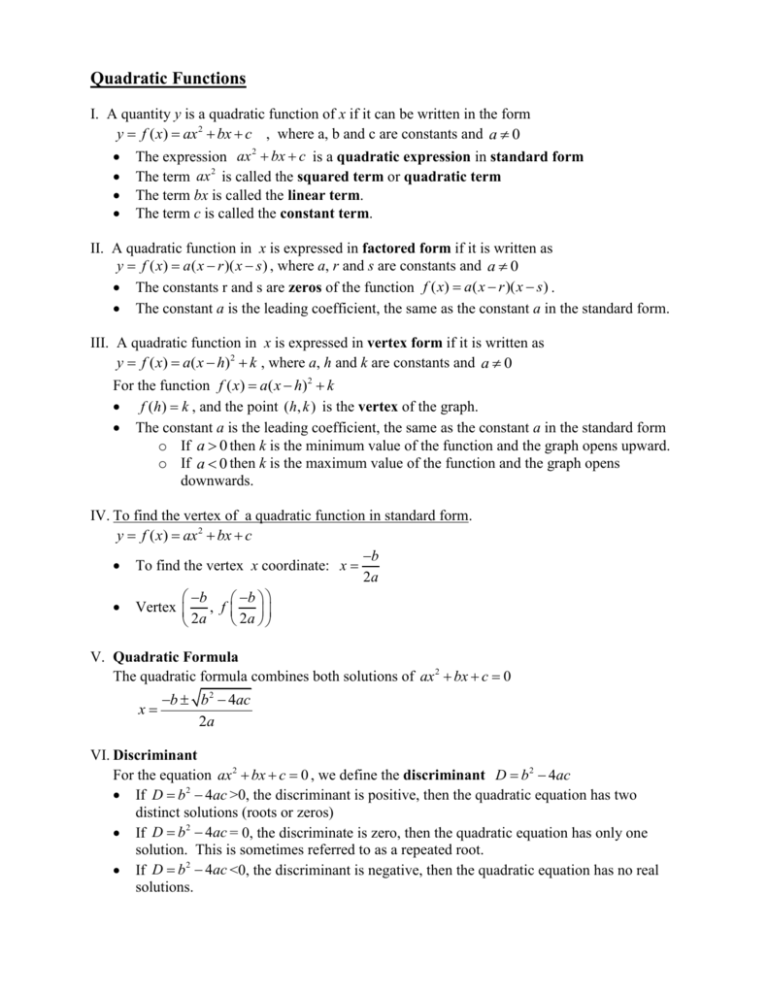
Quadratic Functions I. A quantity y is a quadratic function of x if it can be written in the form y f ( x) ax 2 bx c , where a, b and c are constants and a 0 The expression ax 2 bx c is a quadratic expression in standard form The term ax 2 is called the squared term or quadratic term The term bx is called the linear term. The term c is called the constant term. II. A quadratic function in x is expressed in factored form if it is written as y f ( x) a( x r )( x s ) , where a, r and s are constants and a 0 The constants r and s are zeros of the function f ( x) a( x r )( x s ) . The constant a is the leading coefficient, the same as the constant a in the standard form. III. A quadratic function in x is expressed in vertex form if it is written as y f ( x) a( x h)2 k , where a, h and k are constants and a 0 For the function f ( x) a( x h)2 k f (h) k , and the point ( h, k ) is the vertex of the graph. The constant a is the leading coefficient, the same as the constant a in the standard form o If a 0 then k is the minimum value of the function and the graph opens upward. o If a 0 then k is the maximum value of the function and the graph opens downwards. IV. To find the vertex of a quadratic function in standard form. y f ( x) ax 2 bx c b To find the vertex x coordinate: x 2a b b Vertex , f 2a 2a V. Quadratic Formula The quadratic formula combines both solutions of ax 2 bx c 0 x b b2 4ac 2a VI. Discriminant For the equation ax 2 bx c 0 , we define the discriminant D b 2 4ac If D b 2 4ac >0, the discriminant is positive, then the quadratic equation has two distinct solutions (roots or zeros) If D b 2 4ac = 0, the discriminate is zero, then the quadratic equation has only one solution. This is sometimes referred to as a repeated root. If D b 2 4ac <0, the discriminant is negative, then the quadratic equation has no real solutions.
